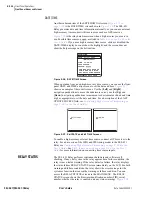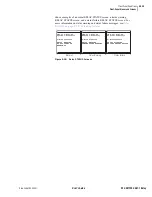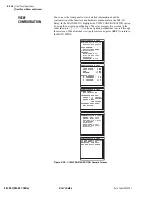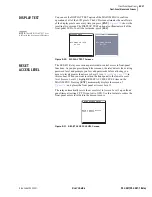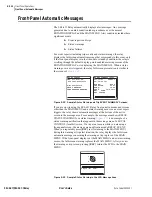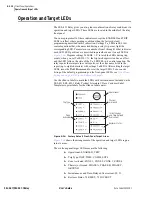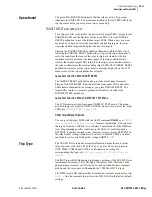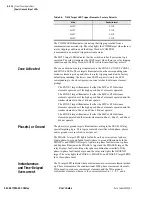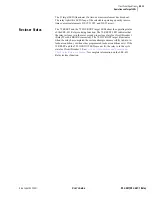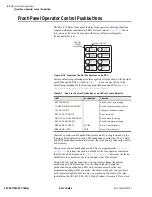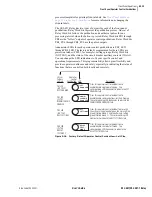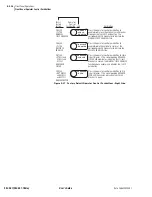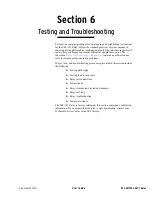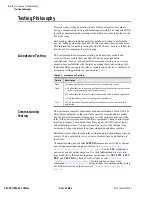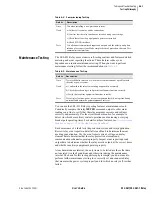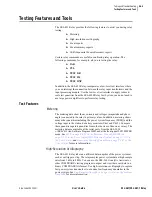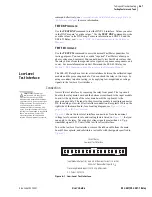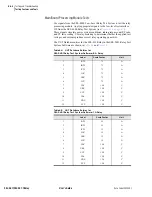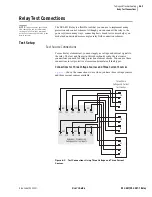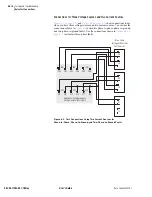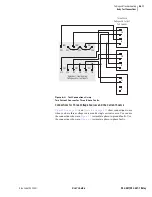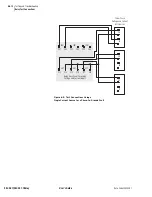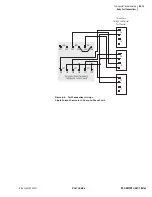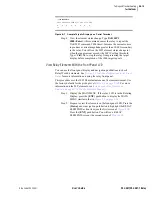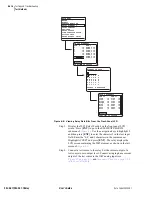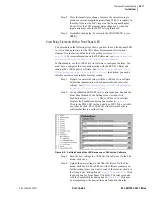
U.6.2
SEL-421/SEL-421-1 Relay
User’s Guide
Date Code 20020501
Testing and Troubleshooting
Testing Philosophy
Testing Philosophy
Protective relay testing generally consists of three categories: acceptance
testing, commissioning testing, and maintenance testing. The categories differ
in testing complexity and according to when these activities take place in the
life of the relay.
Each testing category includes particular details as to when to perform the
test, the testing goals at that time, and the relay functions that you need to test.
This information is a guide to testing the SEL-421 Relay; be sure to follow the
practices of your company for relay testing.
Acceptance Testing
SEL performs detailed acceptance testing on all new relay models and
versions. We are certain that your SEL-421 Relay meets published
specifications. Even so, you can perform acceptance testing on a new relay
model to become familiar with the relay operating theory and settings; this
familiarity helps you apply the relay accurately and correctly. A summary of
acceptance testing guidelines is presented in
.
Commissioning
Testing
SEL performs a complete functional check and calibration of each SEL-421
Relay before shipment so that your relay operates correctly and accurately.
You should perform commissioning tests to verify proper connection of the
relay to the power system and all auxiliary equipment. Check control signal
inputs and outputs. Check breaker auxiliary inputs, SCADA control inputs,
and monitoring outputs. Use an ac connection test to verify that the relay
current and voltage inputs are the proper magnitude and phase rotation.
Brief fault tests confirm that the relay settings and protection scheme logic are
correct. You do not need to test every relay element, timer, and function in
these tests.
At commissioning, use the relay
METER
command to verify the ac current
and voltage magnitude and phase rotation (see
Quantities on page U.4.31 in the User’s Guide
). Use the
PUL
command to
pulse relay control output operation. Use the
TAR
command to view relay
targets and verify that control inputs are operational. Use
TEST FM
,
TEST
DNP
, and
TEST DB
to check SCADA interfaces. (See
page R.8.49 in the Reference Manual
for information on these relay
commands.)
lists guidelines for commissioning testing.
For further discussion of these tests, see
.
Table 6.1
Acceptance Testing
Details
Description
Time
Test when qualifying a relay model for use on the utility system.
Goals
a) Confirm that the relay meets published critical performance specifications
such as operating speed and element accuracy.
b) Confirm that the relay meets the requirements of the intended application.
c) Gain familiarity with relay settings and capabilities.
Test
Test all protection elements and logic functions critical to your intended
application.
Summary of Contents for SEL-421
Page 8: ...This page intentionally left blank ...
Page 30: ...This page intentionally left blank ...
Page 110: ...This page intentionally left blank ...
Page 204: ...This page intentionally left blank ...
Page 284: ...This page intentionally left blank ...

